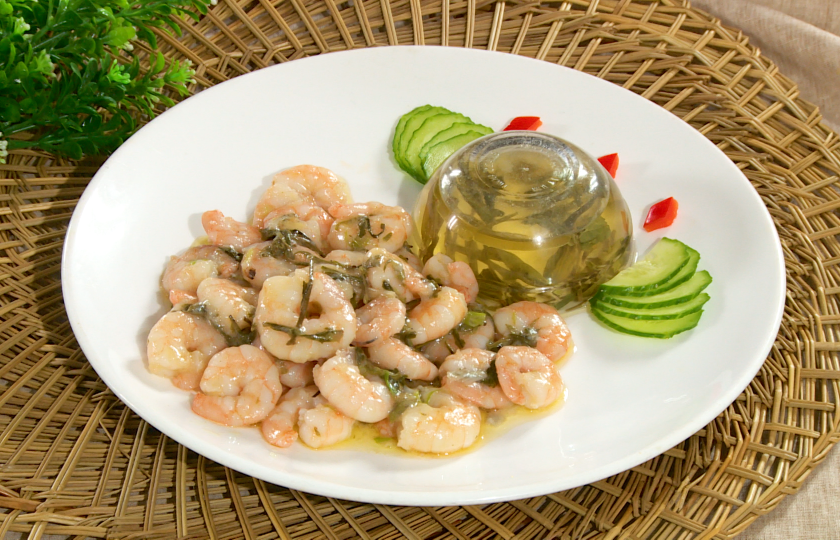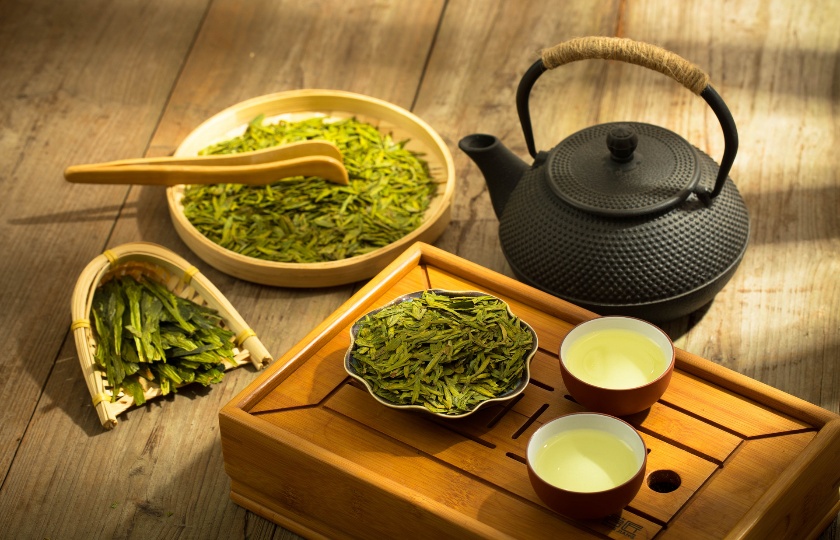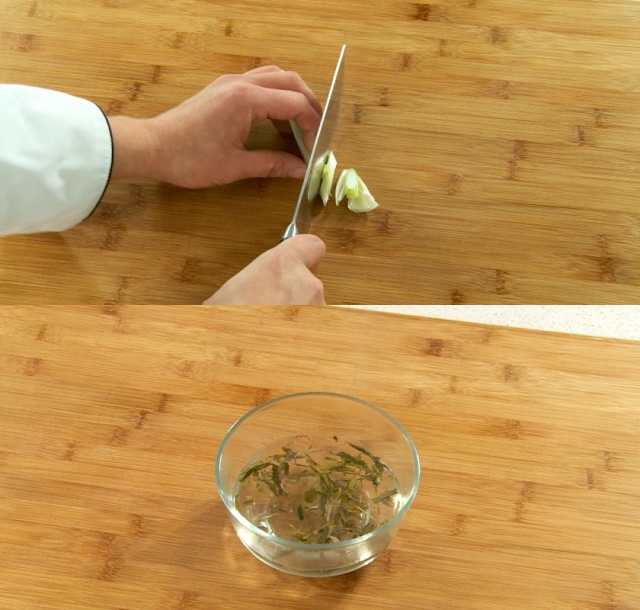Dragon Well Tea Shrimp(Long Jing Xia Ren)


Dragon Well Tea Shrimp is a traditional famous dish in Zhejiang area. It has a fresh and tender taste. It is a dish that many people like to eat. Now I will share the recipe of this dish with everyone.
What is Dragon Well Tea Shrimp?
Dragon Well Tea Shrimp is a characteristic delicacy in Hangzhou. It is cooked with fresh tender buds of Longjing tea leaves and tender shrimp. It has an elegant color and unique taste. The shrimp are white and tender, the tea leaves are green, and the fragrance is overflowing. After eating, people feel refreshing and appetizing with a long aftertaste. Among Hangzhou dishes, this dish is unique.
Traditional Dragon Well Tea Shrimp uses fresh river shrimps during the Qingming Festival. At that time, the river shrimps are large and delicious. If you miss the season, using fresh prawns instead is also a good choice, and the taste is equally wonderful.
Ingredients Needed and Substitutions
Main ingredients:
Longjing tea: One of the raw materials and also a characteristic ingredient of this dish, providing a unique fragrance and taste.
Shrimp: It is the main ingredient for making Dragon Well Tea Shrimp, providing tender meat and rich nutrition.
Side dishes:
Green onions: Have a unique aroma and help enhance the taste of the whole dish.
Egg white: The main function is to make the shrimp more tender and enhance the taste of the dish.
Seasonings:
Salt: Used for seasoning to enhance the taste of the dish.
Starch water: The main function is to thicken the sauce, making the taste of the dish more delicate.
Tea water: Used to wash shrimp to remove the fishy smell of shrimp and enhance the tea fragrance of shrimp.
Substitutes:
Green onions: Can be replaced by celery, green garlic, or coriander.
Longjing tea: If there is no Longjing tea, other green teas can be used instead.
Shrimp: River shrimp or sea shrimp can both be used.
Egg white: Can be replaced by a mixture of cornstarch and water.
Starch water: Can be replaced by potato starch or corn flour.
Oil: Can be rapeseed oil, peanut oil, butter, etc.
Tea water: If there is no tea water, it can be replaced by clear water.
How to distinguish grades of Longjing tea?
West Lake Longjing tea is divided into five grades: super grade, first grade, second grade, third grade and boutique grade.
Super grade West Lake Longjing tea: The picked tea leaves are the tender buds of one bud and one leaf just unfolding. The leaves are flat and smooth. It is mainly picked before the Qingming Festival. At this time, the tea leaves are the fullest and most uniform.

First grade West Lake Longjing tea: The picked tea leaves are the leaves of one bud and one leaf unfolding, including the tea leaves of one bud and two leaves just unfolding. It is relatively flat and smooth with more buds. Compared with the super grade, the second and third leaves of the first grade are slightly larger and are generally pre-rain tea.
Second grade West Lake Longjing tea: The picked tea leaves are the leaves of one bud and two leaves unfolding. It is relatively flat. The second and third leaves have already shown a dark green color. There are fewer buds and the length of each tea leaf is longer.
Third grade West Lake Longjing tea: The picked tea leaves are the leaves of one bud and two leaves unfolding and contains a small amount of two leaves opposite each other. Each tea leaf is larger and is suitable for daily drinking by old tea lovers.
Boutique West Lake Longjing tea: It is stricter than the super grade. Boutique grade tea is selected from the super grade. The buds are wide and full. Usually, the best group species tea trees are selected for picking.
Tips for Success
1. Fresh ingredients are the key to cooking delicious dishes. Especially for shrimp, freshness directly affects the taste and quality of the dish. Choose fresh and high-quality ones.
2. Use boiling water to brew Longjing tea. Boiling water can release the aroma of Longjing tea and avoid bitterness. The brewed tea leaves should be taken out and set aside to add flavor to the dish.
3. When marinating shrimp, add an appropriate amount of salt and egg white. Stir all the ingredients until they become sticky. This is more convenient for locking in the moisture and umami of shrimp. Then add starch water to coat the shrimp to maintain tenderness and integrity during frying.
4. When frying shrimp, pay attention to controlling the heat. Controlling the heat is crucial for frying shrimp. The oil temperature should be moderate. Stir-fry quickly to ensure that the shrimp are evenly heated and quickly change color.
5. When preparing the soup, add the brewed tea leaves and tea water and continue to cook to let the tea fragrance blend into the shrimp and soup. Finally, thicken the soup to make it thicker, increasing color and taste.
6. When seasoning, the amount of salt should be moderate. Highlight the deliciousness of shrimp without overpowering the tea fragrance. Avoid using too many seasonings to prevent destroying the natural flavor.
INGREDIENTS
Main Ingredients
-
·5g Longjing tea
-
·300g shrimp
Additional Ingredients
-
·15g green onions
Seasonings
-
·5g salt
-
·1 egg white
-
·20ml starch water
-
·50ml oil
-
·15ml tea water
COOKING STEP
Step 1
Prepare ingredients:
Cut the green onions into slices about 2-3 millimeters thick and take 15 grams for later use.
Brew Longjing tea with an appropriate amount of boiling water. After brewing, take out 15 milliliters of tea water and take out the brewed Longjing tea leaves for later use.

Step 2
Marinate shrimp:
Put 300 grams of processed shrimp in a bowl and add 5 grams of salt and 1 egg white; stir well with chopsticks until the mixture of shrimp and seasonings becomes relatively sticky.

Step 3
Add starch water:
Add 10 milliliters of starch water to the sticky shrimp mixture; stir well again with chopsticks to make the shrimp evenly coated with a layer of paste.

Step 4
Fry the fragrance of green onions:
Pour 50 milliliters of oil into the pot and heat the oil over medium heat; after the oil is hot, add 15 grams of green onion slices and stir-fry quickly a few times until a strong onion fragrance is stir-fried.

Step 5
Fry shrimp:
Add the shrimp coated with paste to the fried green onion slices; stir-fry for about 1 and a half minutes until the shrimp change color and become tender and delicious.

Step 6
Add tea leaves and tea water:
Pour the brewed Longjing tea leaves and 15 milliliters of tea water into the pot; cook for about 1 minute to fully integrate the aroma of tea leaves into the shrimp and soup.

Step 7
Thicken and collect the juice:
Add 10 milliliters of starch water to the pot; stir-fry quickly a few times to make the soup slightly thicker and then it can be taken out and served on a plate.

More delicious recipes worth trying
Delectable Crispy Chicken Recipe
Tasty Easy Spicy Vegetable Salad
Delectable Candied Sweet Potatoes
Recipe Variations
Pine nuts: At the final stage of frying Dragon Well Tea Shrimp, sprinkle a handful of fried pine nuts. The crispy texture of pine nuts forms a sharp contrast with the tenderness of shrimp and also adds a natural sweetness.
Pea shoots: Add tender green pea shoots when the shrimp are almost fried. Stir-fry for a few times and then take out of the pot. The fresh taste and bright color of pea shoots can add a touch of brightness to Dragon Well Tea Shrimp and also increase the nutritional value.
Dried scallop shreds: Tear dried scallops into shreds and fry them with shrimp. The rich flavor of dried scallop shreds and the fragrance of Longjing tea blend with each other, bringing richer taste and layers to the dish.
Diced colorful peppers: Cut colorful peppers of red, yellow and green into small dices and fry them with shrimp. The bright colors and slightly sweet taste of colorful peppers can add visual effects and taste diversity to the dish.
Mushrooms: Choose delicious mushrooms like shiitake mushrooms and white jade mushrooms. Cut them into slices and fry them with shrimp. The umami of mushrooms and the aroma of Longjing tea complement each other, making the dish more delicious.
Tofu: Cut tender tofu into small pieces and cook them with shrimp. The soft texture of tofu and the deliciousness of shrimp set off each other. At the same time, tofu can also absorb the aroma of Longjing tea, making the dish more intense.
Serving Suggestions
Recommended pairings
Rice: Rice is an excellent companion for Dragon Well Tea Shrimp. Its mild sweetness can set off the deliciousness of shrimp and make the whole meal more enjoyable.
Stir-fried vegetables: Dragon Well Tea Shrimp can be eaten with some light vegetables such as broccoli or spinach. This can not only balance the taste but also provide necessary nutrition and dietary fiber to promote digestion.
Clear soup: Dragon Well Tea Shrimp is also suitable to be paired with clear soup, such as seaweed and egg drop soup or tofu soup. It can neutralize greasiness and make the whole meal more harmonious.
Fruits: Dragon Well Tea Shrimp can also be eaten with various fruits such as apples and oranges. It not only supplements nutrition but also helps digestion and relieves greasiness.
Longjing tea: When eating Dragon Well Tea Shrimp, it is recommended to drink a cup of Longjing tea. The fragrance of Longjing tea and the tea fragrance of the dish complement each other and enhance the overall dining experience.
Eating suggestions
Eat while hot: Dragon Well Tea Shrimp is best enjoyed while hot so as to experience the freshest taste and the strongest tea fragrance.
Eat in moderation: Shrimp are high in protein. Excessive consumption may increase the burden on digestion. The caffeine in tea leaves may also have an impact on some people.

















